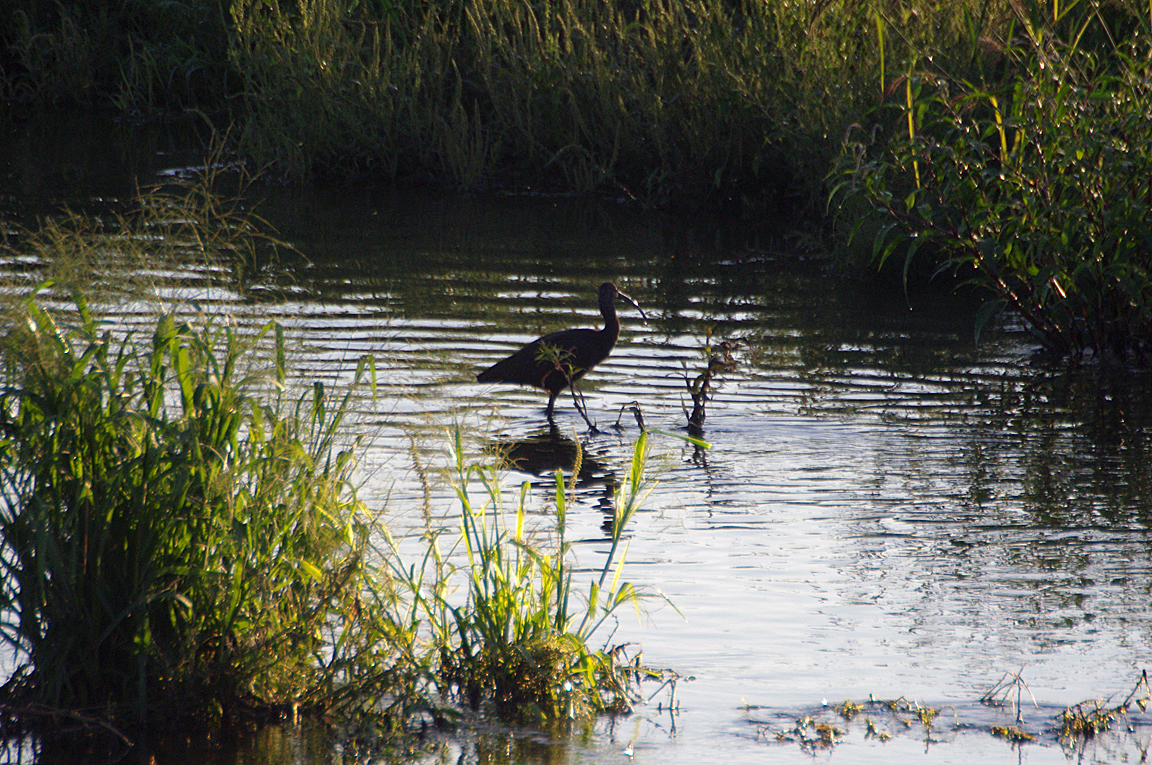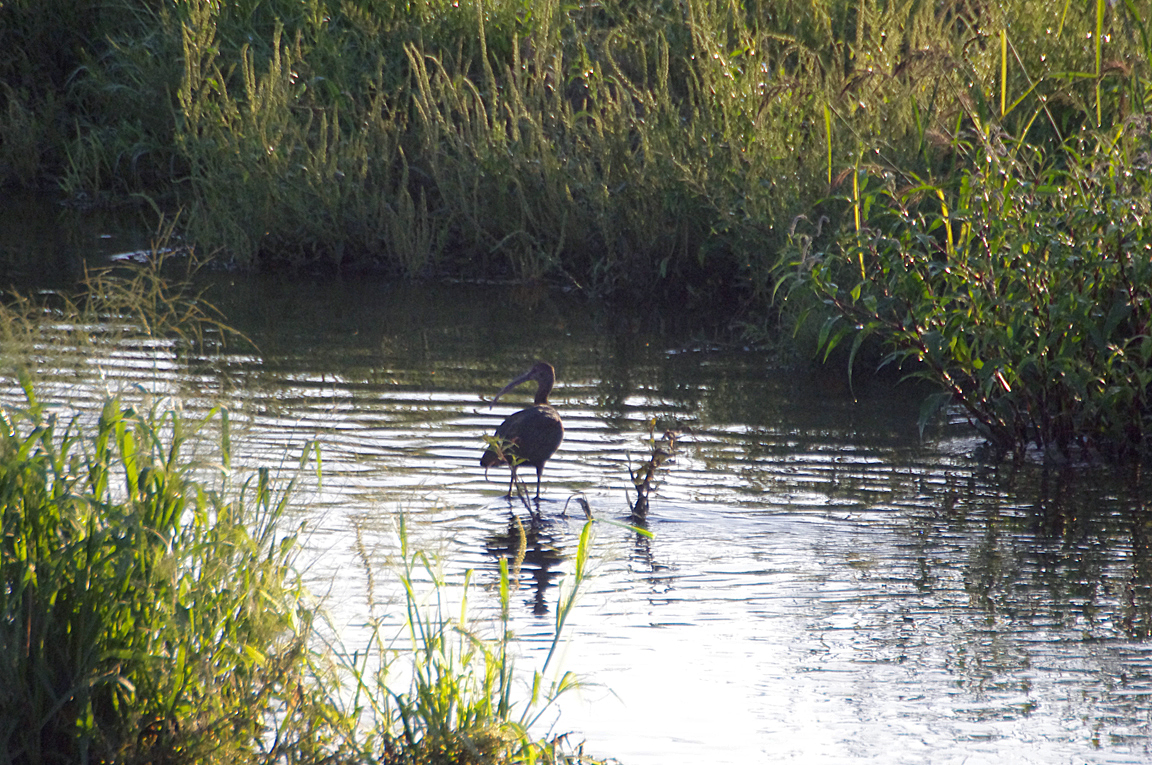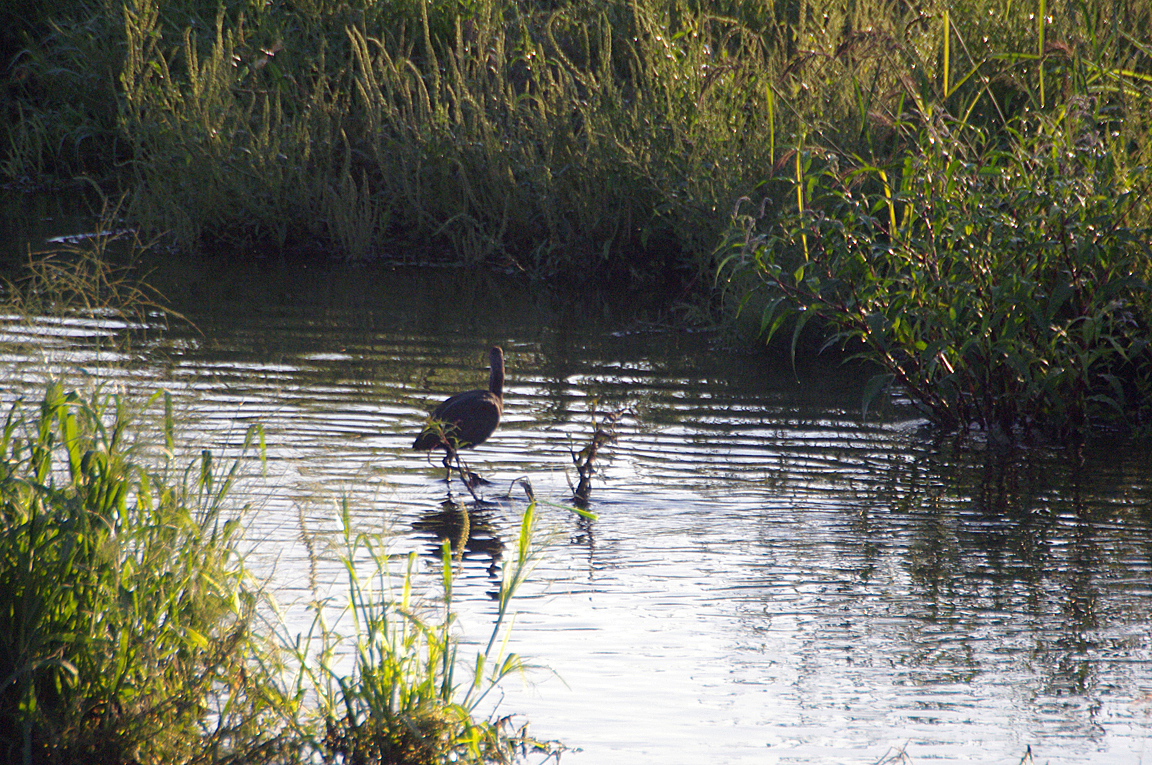|
|
|
 |
White-faced Ibis
|
| Plegadis chihi | |
A dark wading bird with a long, down-curved bill, the White-faced Ibis is a western replacement for the Glossy Ibis. Similar in appearance and habits, the two species can be distinguished only by slight differences in coloring of the face and legs.
Interesting Information
-
White-faced ibises are declining throughout North America, where continuing threats include draining of wetlands and the widespread use of pesticides.
-
It is thought that the largest white-faced ibis nesting colony in the world can be found in the marshes around the Great Salt Lake in Utah.
-
A group of ibises has many collective nouns, including a "congregation", "stand", and "wedge" of ibises.
Description
Adult Description
-
Long, down-curved bill.
-
Long dark legs.
-
Body all dark.
-
Length Range: 51-66 cm (20-26 in)
-
Weight: 726 g (25.6 oz)
-
Size: Large (16 - 32 in)
-
Color Primary: Brown, Sheen or Iridescence
-
Underparts: Red-brown
-
Upperparts: Red-brown with bronze and green gloss.
-
Back Pattern: Solid
-
Belly Pattern: Solid
-
Breast Pattern: Solid
Sex Differences
Sexes similar.
Immature
Similar to adult, but with dark banded bill and duller body.
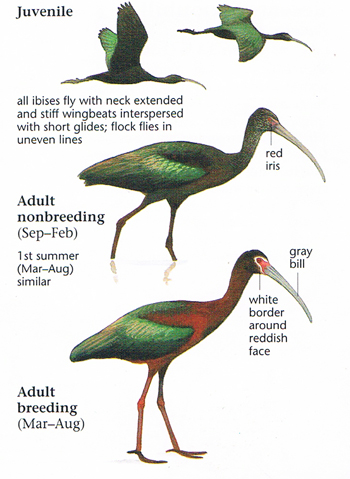
Photo taken from: The Sibley Field Guide by David Allen Sibley
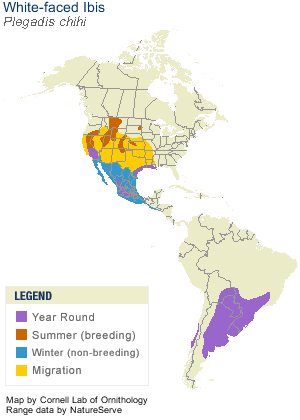
© 2003 Cornell Lab of Ornithology
|
Habitat |
|
Salt and fresh marshes in the west, and coastal marshes and brushy islands in Louisiana and Texas. |
|
Behavior |
|
Feeds by probing mud with its long bill. |
|
Food |
|
Diet consists of crayfish and other invertebrates, as well as frogs and fish. Coastal birds forage in salt marshes and include crabs in diet. |
Taxonomy
| Kingdom: | Animalia |
| Phylum: | Chordata |
| Subphylum: | Vertebrata |
| Class: | Aves |
| Order: | Pelecaniformes |
| Family: | Threskiornithidae |
| Genus: | Plegadis |
| Species: | Plegadis chihi |
Similar Species |
|
|
Bird Sound |
|
Nasal moaning "urm." Croaks and rattles at breeding colony. |
|
Eggs look like this |
|
Photo taken from: ARCTOS Collaborative Collection Management Solution |
